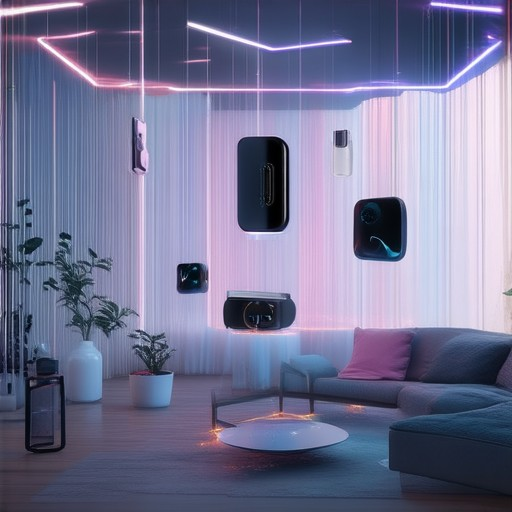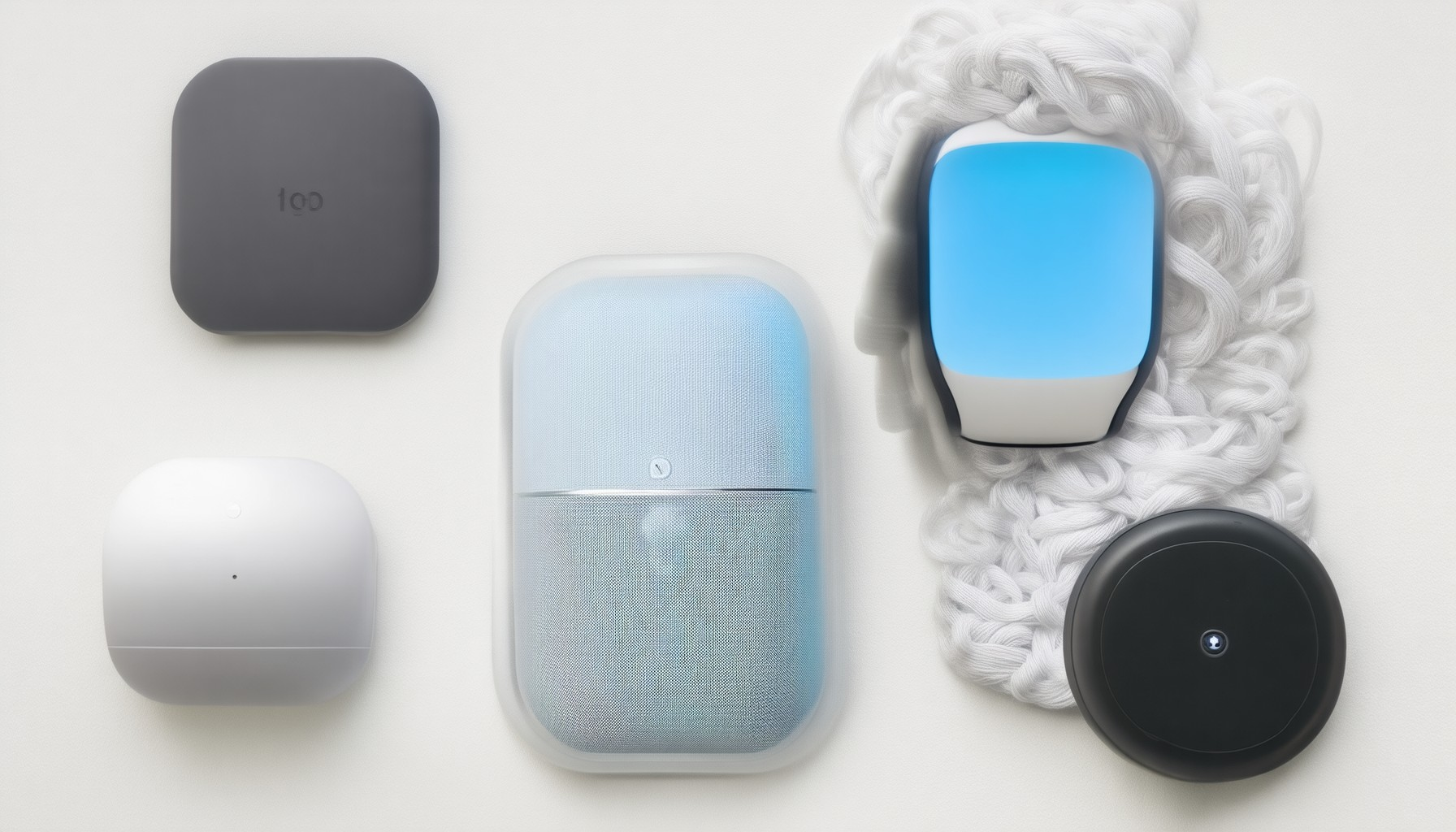Are you eager to transform your home into a smarter, more efficient space without breaking the bank? With the ever-growing popularity of smart home technology, finding the best deals on smart home gadgets has never been easier. Whether you’re looking to enhance convenience, save energy, or simply enjoy the latest innovations, this guide is here to walk you through the top-rated smart home devices, the best brands to trust, and how to maximize your savings while enjoying the benefits of a smarter lifestyle. From budget-friendly options to top-tier gadgets, we’ll explore everything you need to know to create a home that’s as smart as it is comfortable. Dive in and discover how you can elevate your living space with the latest smart home gadgets without spending a fortune.
Key Takeaways
- Save Money: By using smart power strips and energy-efficient appliances, you can significantly reduce your monthly expenses.
- Convenience: Control your home’s lighting, temperature, and security systems effortlessly from your phone or voice assistant.
- Energy Efficiency: Programmed thermostats and smart devices help minimize energy consumption, lowering your utility bills.
- Security: Enjoy enhanced protection with smart cameras, locks, and alarms that provide remote monitoring and access control.
- Budget-Friendly: Discover affordable smart home deals and DIY solutions to get started without breaking the bank.
- Start Small: Test the smart home experience with individual devices like smart speakers or plugs before fully committing.
- Competitive Ecosystems: Choose from leading platforms like Amazon’s Alexa, Google’s Nest, and Apple’s HomeKit to build your smart home.

Top-Rated Smart Home Devices
We’ve curated a selection of the best smart home devices available today, designed to enhance your daily life through convenience, efficiency, and innovation.
- Smart Speakers: These versatile devices act as hubs for your smart home ecosystem, controlling lighting, thermostats, and more via voice commands. Leading options include:
- Amazon Echo (4th Gen) – A cost-effective choice with seamless integration into Alexa-enabled devices.
- Google Nest Audio – Offers superior sound quality and deep integration with Google Assistant.
- Apple HomePod mini – Compact design with high-quality audio and Siri controls.
- Smart Thermostats: Optimize your home comfort with programmable thermostats that save energy and reduce waste. Top models include:
- Nest Thermostat E – Known for its intuitive interface and energy-saving features.
- EcoBee Smart Thermostat – Offers precise temperature control and energy usage tracking.
- Honeywell Smart Thermostat – Compatible with most heating and cooling systems, featuring remote access via the Honeywell app.
- Smart Lights: Enhance your home ambiance with customizable LED lighting solutions. Popular choices are:
- Cree Smart Bulbs – Energy-efficient and long-lasting, perfect for dimming and scene settings.
- Lutron Caseta – Modular system allowing for custom lighting setups with voice controls.
- Smart Security Systems: Protect your home with integrated security cameras, doorbells, and alarms. Leading options include:
- ADT Pulse – Comprehensive security solution with 24/7 monitoring and mobile app control.
- Xfinity Home Security – Combines security systems with home automation capabilities.
- Schlage Smart Locks – Integrates with home security systems for added protection.
- Smart Kitchens: Modernize your cooking and cleaning routines with smart appliances. Top picks are:
- SmartEGG – Smart ovens that connect to your phone for remote cooking.
- Smart Microwaves – App-controlled microwaves for convenient meal preparation.
- Fridge Connect – Smart refrigerators that track expiration dates and inventory.
- Smart Plugs and Sockets: Transform ordinary appliances into smart devices with plug-and-play solutions. Best options include:
- TP-Link Kasa Plug – Affordable and reliable plugs for smart home automation.
- Wi-Fi Smart Plugs – Easy setup with seamless Wi-Fi connectivity.
- iOTEGA Smart Sockets – Durable and weather-resistant for outdoor use.
Best Brands for Smart Home Products
When it comes to smart home products, several leading brands stand out for their innovation, reliability, and extensive product lines. Here’s a breakdown of the top contenders:
- Amazon Smart Home Devices : Amazon is a powerhouse in the smart home space, offering a vast selection of products like smart speakers, thermostats, and security systems. Their ecosystem integrates seamlessly with Alexa, making it easy to control various devices from one platform.
- Google Nest Products : Known for their user-friendly design and integration with Google Assistant, Nest offers a range of smart home solutions including thermostats, cameras, and doorbells. Their reputation for reliability and innovation makes them a top choice.
- Samsung SmartThings : Samsung’s SmartThings platform provides a comprehensive smart home solution, offering smart appliances, hubs, and cameras. Its compatibility with multiple devices and ecosystems makes it a versatile option for homeowners.
- Apple HomeKit : While primarily aimed at iPhone users, HomeKit offers a polished experience with smart home devices like lights, thermostats, and security systems. Its integration with other Apple devices adds to its appeal.
Each brand caters to different preferences and needs, whether you’re looking for affordability, integration with existing systems, or a seamless user experience. Consider your lifestyle and preferred ecosystem when choosing the right brand for your smart home.

What is the Difference Between a Smart Device and a Smart Home?
A smart device is an individual, internet-connected piece of hardware that can be remotely controlled, programmed, and automated to provide a service or convenience. Examples include smart speakers, thermostats, lights, and security cameras.
A smart home, on the other hand, refers to a fully integrated residential ecosystem where multiple smart devices work together seamlessly to automate various aspects of daily life. This includes everything from lighting and temperature control to security systems and entertainment.
Key Differences:
- Scale: A smart device is a single unit, while a smart home involves an entire network of interconnected devices.
- Integration: A smart home requires multiple smart devices to function as a cohesive system, whereas a smart device operates independently.
- Purpose: Smart devices focus on specific tasks, whereas a smart home aims for overall automation and efficiency in the entire living space.
While a smart home relies on many smart devices, it’s more than just a collection of gadgets. It’s an interconnected system designed to enhance comfort, security, and productivity through intelligent automation.

How Can I Save Money with My Smart Home?
Implementing smart home technology can significantly reduce your energy consumption and monthly expenses. Here are some effective strategies to maximize your savings:
- Smart Power Strips and Plugs : Install smart power strips or plugs to remotely turn off devices like TVs, gaming consoles, and other energy-hungry appliances when not in use.
- Smart Lighting Solutions : Set up smart lights with timers or motion sensors to automatically adjust brightness levels, reducing unnecessary energy use.
- Smart Thermostats : Use programmable thermostats like the Nest or Ecobee to adjust temperatures based on your schedule, saving energy when you’re away or asleep.
- Energy Monitoring Systems : Utilize energy monitoring tools to track and optimize your consumption patterns, helping you identify areas for further savings.
- Smart Water Conservation : Integrate smart water sensors or systems to monitor and control water usage, promoting conservation and cost efficiency.
- Smart Appliance Control : Plug older appliances into smart plugs to control them via your smartphone, allowing you to manage devices like your washer or coffee maker remotely.
- Energy-Efficient Appliances : Invest in Energy Star-certified appliances that consume less energy, contributing to long-term cost savings.
- Low-Power Security Devices : Opt for energy-saving modes on security cameras and doorbells to extend battery life and reduce operational costs.
- Smart App Integration : Leverage platforms like Google Home or Apple HomeKit to automate energy-saving routines, such as turning off unused devices when you leave the house.
- Diy Smart Home Solutions : Consider creating a basic system using existing devices and smart plugs, offering a cost-effective entry into smart home automation.
- Utility Company Incentives : Explore rebates or incentives offered by your utility provider for installing energy-efficient devices, potentially offsetting initial costs.
By adopting these strategies, you can enhance your smart home’s functionality while minimizing energy waste and lowering your monthly expenses. Start with manageable changes and gradually integrate more advanced features to maximize your savings over time.
Disadvantages of Smart Home
A smart home offers convenience and automation but also comes with several potential drawbacks:
- High Costs: Implementing a smart home requires purchasing numerous devices and may involve installation fees, making it a significant upfront investment.
- Privacy Concerns: Connected devices generate data about daily life, which can be vulnerable to hacking and unauthorized access if security measures are inadequate.
- Interoperability Issues: Not all smart devices work seamlessly together, leading to compatibility problems and a fragmented user experience.
- Data Dependency: Smart home functionality relies heavily on internet connectivity, which can fail during power outages or network disruptions.
- Security Vulnerabilities: IoT devices often have exploitable weaknesses, increasing the risk of cyberattacks that could compromise personal safety.
- Over-reliance on Technology: Users become dependent on technology for basic tasks, which can be inconvenient when systems fail or require manual intervention.
- Learning Curve: Older generations or those less familiar with technology may struggle with the complexity of managing multiple smart devices and apps.

Is It Worth Having a Smart Home?
A smart home offers numerous benefits, but determining if it’s worth the investment requires evaluating both the costs and advantages.
Pros of a Smart Home
- Convenience: Control lighting, temperature, and security systems from your phone or voice assistant, saving time and effort.
- Security: Enhance home security with smart cameras, locks, and alarms that provide remote monitoring and access control.
- Energy Efficiency: Programmable thermostats and smart appliances can reduce energy consumption and lower utility bills.
- Integration: Seamless integration with other smart devices simplifies daily tasks and enhances overall functionality.
Cons of a Smart Home
- High Initial Cost: Installation and setup can be expensive, with ongoing costs for electricity and service subscriptions.
- Learning Curve: Mastering how devices interact may require time and patience, especially if integrating multiple brands.
- Compatibility Issues: Not all devices may work together smoothly, potentially leading to conflicts or inefficiencies.
- Privacy Concerns: Continuous data collection by smart devices raises important privacy questions.
Consider Alternatives
- Start with individual smart products like smart speakers or smart plugs to test the waters without a full system.
- Explore platforms like 35OrLess for affordable deals on smart home devices.
Competitors and Ecosystems
Major players include Amazon’s Alexa , Google’s Nest , and Apple’s HomeKit . Each offers unique features and ecosystems, with varying degrees of compatibility among devices.
Conclusion
Whether a smart home is worth it depends on your lifestyle and budget. For those ready to embrace modernization and convenience, the investment can be rewarding. For others, a step-by-step approach might be more feasible. Research thoroughly and consider beginning with a few devices to experience the benefits firsthand.




